This is an affectionate photographic tribute to the shopkeepers of italy, most of whom were forced to close this week because of COVID-19.
So there I was, unable to get back to Italy for the foreseeable future and worried about the people we know there. Then I saw the news about most shops being closed, which depressed me further, but then I realised it had given me an idea about something else to celebrate about Italy. It might cheer me up a bit, and I hope it cheers you up too.
The Italian genius for design manifests itself in various celebrated ways. The fashion houses of Milan. Alfa Romeo and Ferrari. The classic Vespa. The Piaggio P.180 aircraft. It isn’t enough merely to be fit for purpose. – it must be beautiful. (In fact thinking back to my much-loved Alfa 159, sometimes form clearly had taken precedence over function). But it isn’t just the highly-paid designers. Deep down, every Italian is a stylist. You can tell by the way they dress for the evening passegiata. And in every market and every shopping street, you can tell by the care with which they arrange the displays of merchandise for maximum effect on stalls and in shop windows.
The architecture can be a delight too – especially the way that a vintage shopfront is carefully maintained for decades.
Italians are famously individualists. Not always a good thing, when it comes to following public health directives. But the pride that people take in themselves and their own enterprise really comes out in their shops. I’ve already posted a photo essay on the market at Padua, which you can look at to see the displays of fruit, fish and meat.
So here is an affectionate tribute to shopfronts and shop window displays, dedicated to all of their proprietors, and what they are going through right now. Things may not always be done in the most refined taste, indeed sometimes they are positively idiosyncratic, but in every case they have been done carefully.
We start in the town of Norcia. Apart from being the birthplace of St Benedict, it is famous for its smallgoods manufacturers. So much so that salumerie throughout Italy often refer to themselves as Norcinerie.
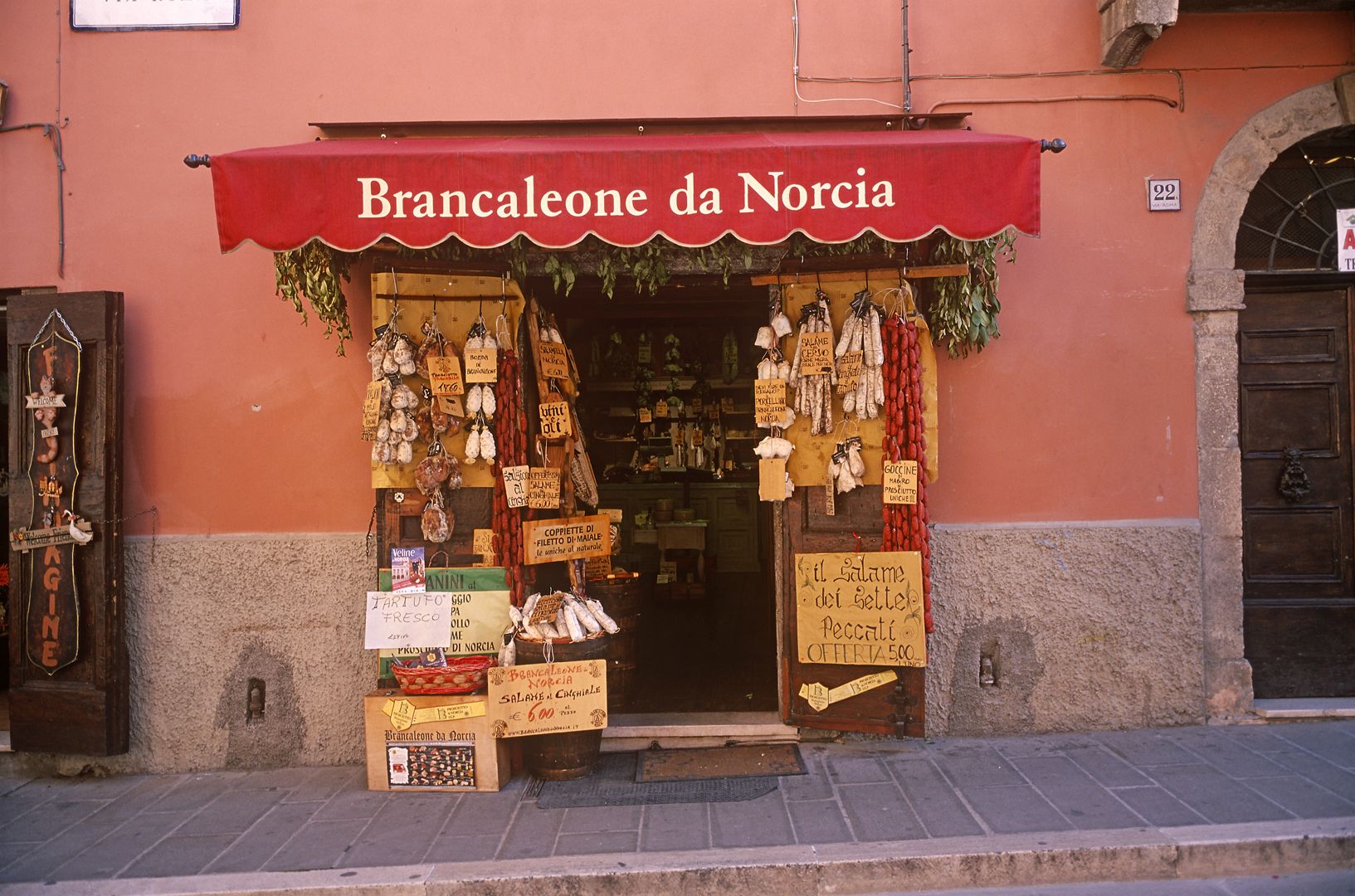
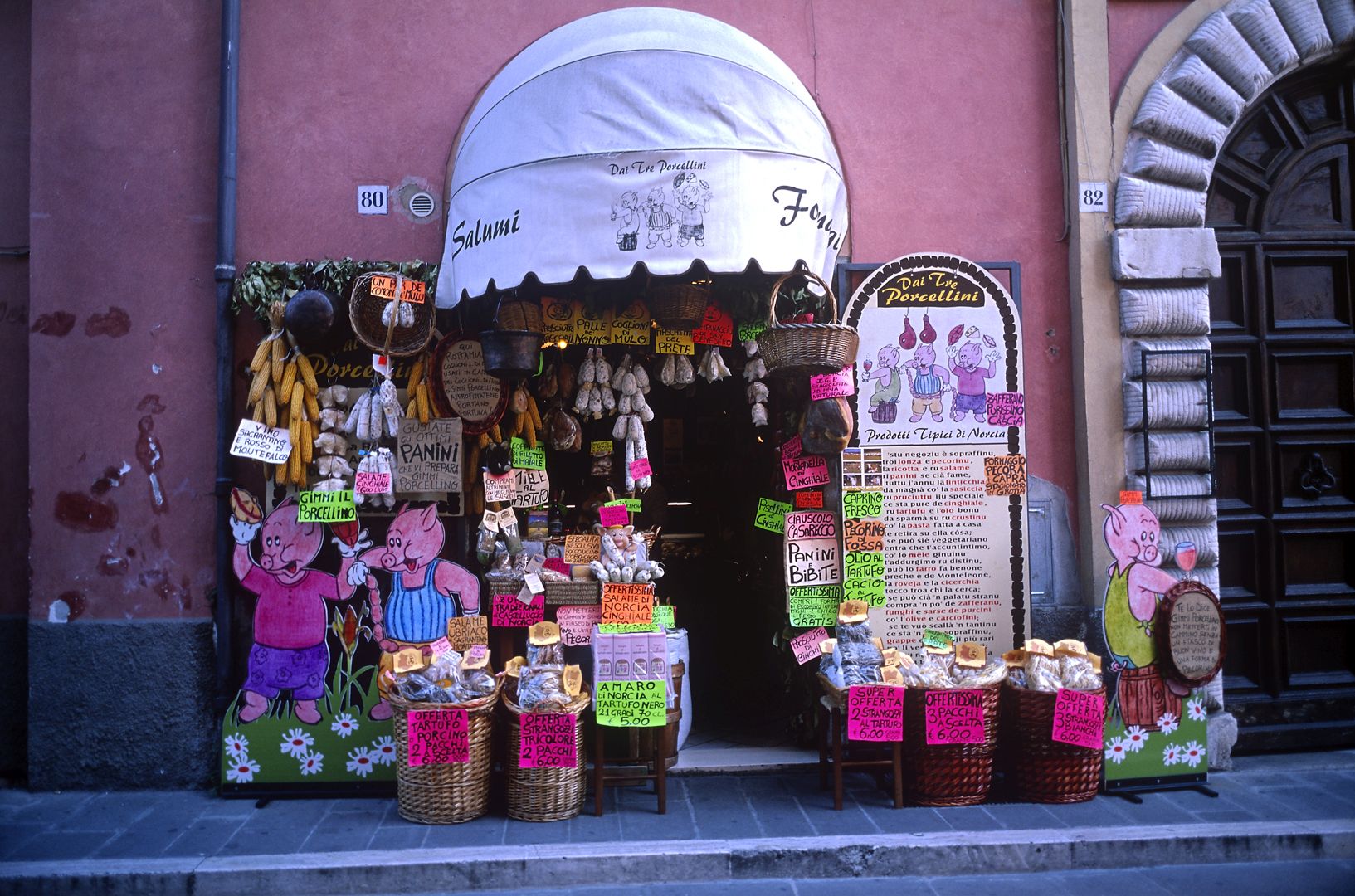
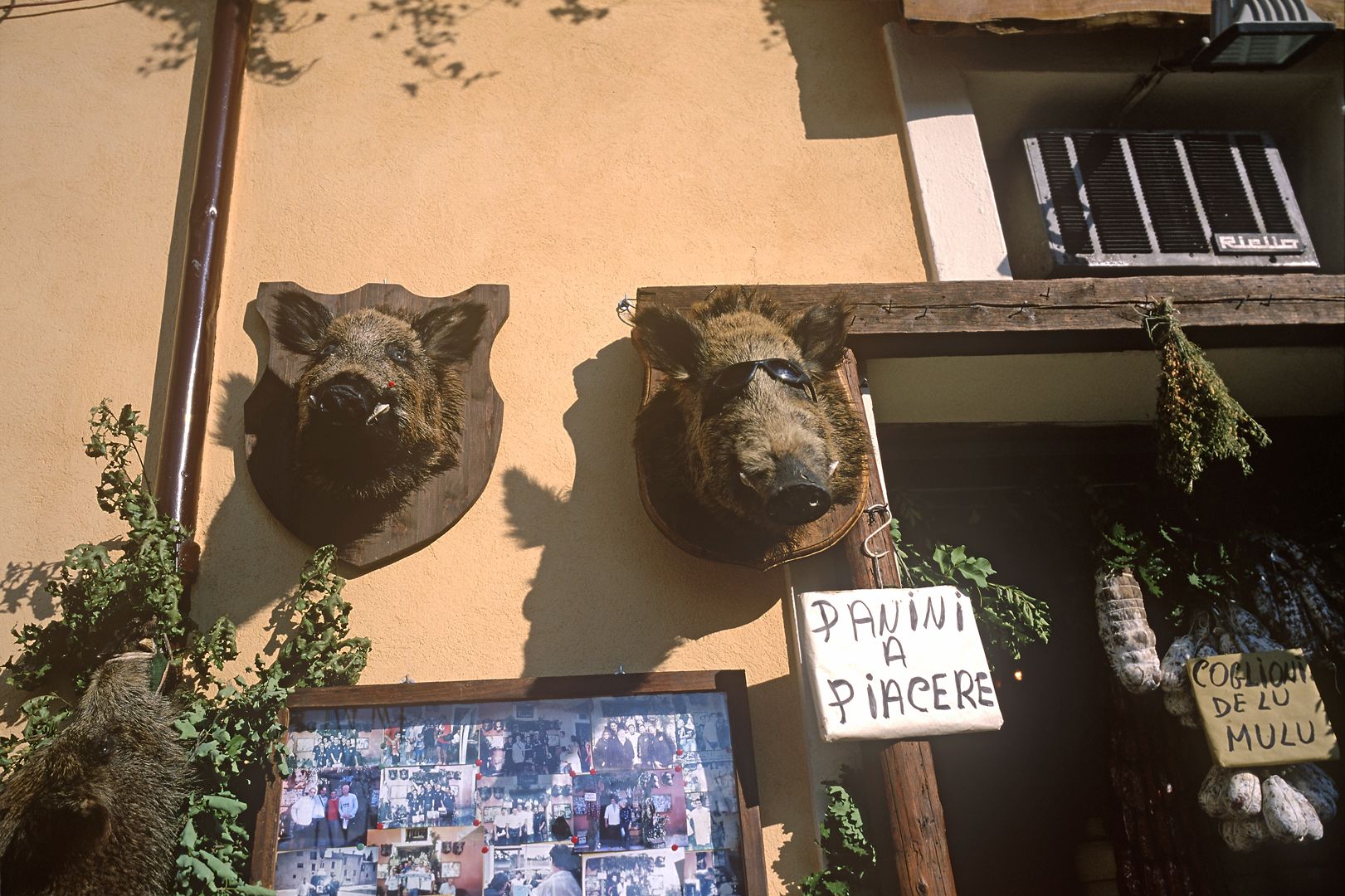
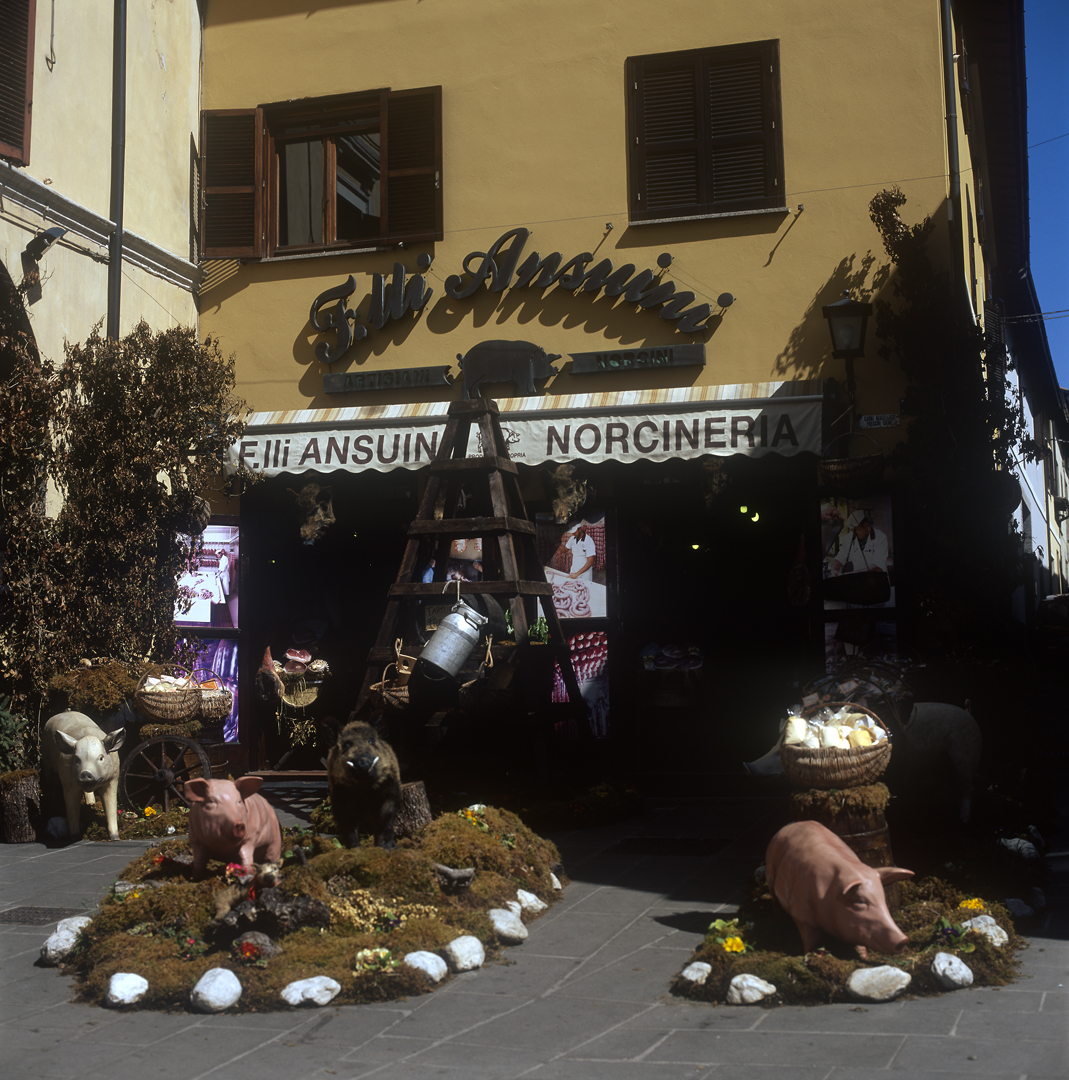
The first three of those pictures were taken with my favourite 35mm camera of all the many I have owned. The Contax brand originally referred to cameras made by the branch of Zeiss that stayed in the old East Germany. The brand was bought by the Japanese Kyocera company, and they produced a couple of absolutely beautiful little rangefinder cameras, with superb genuine Zeiss lenses. If they would bring out a digital version I would buy it like a shot. Being small and light, the Contax G1 is great for candid street photography, such as the following two taken in Via Garibaldi in the Arsenale quarter of Venice.
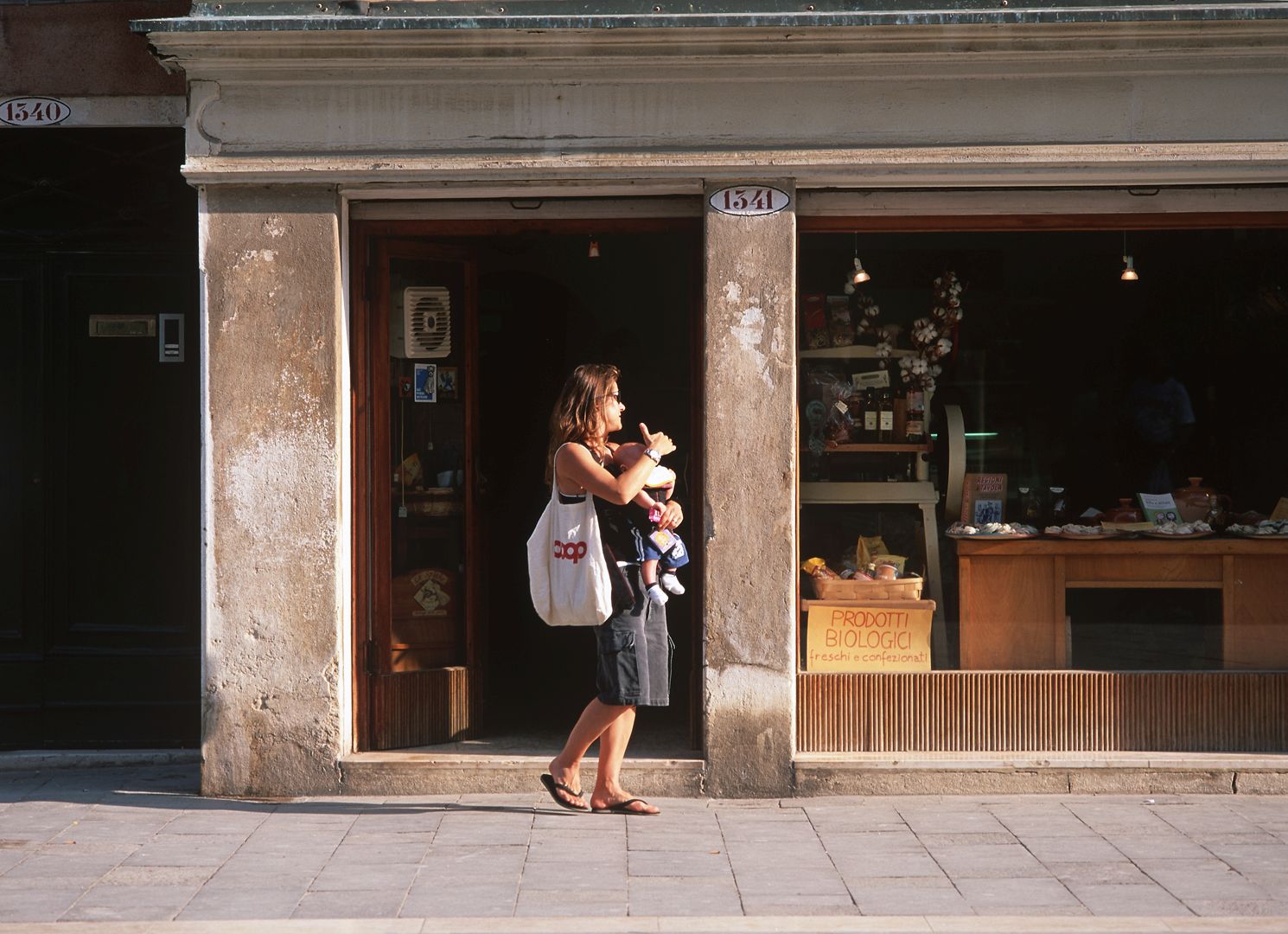
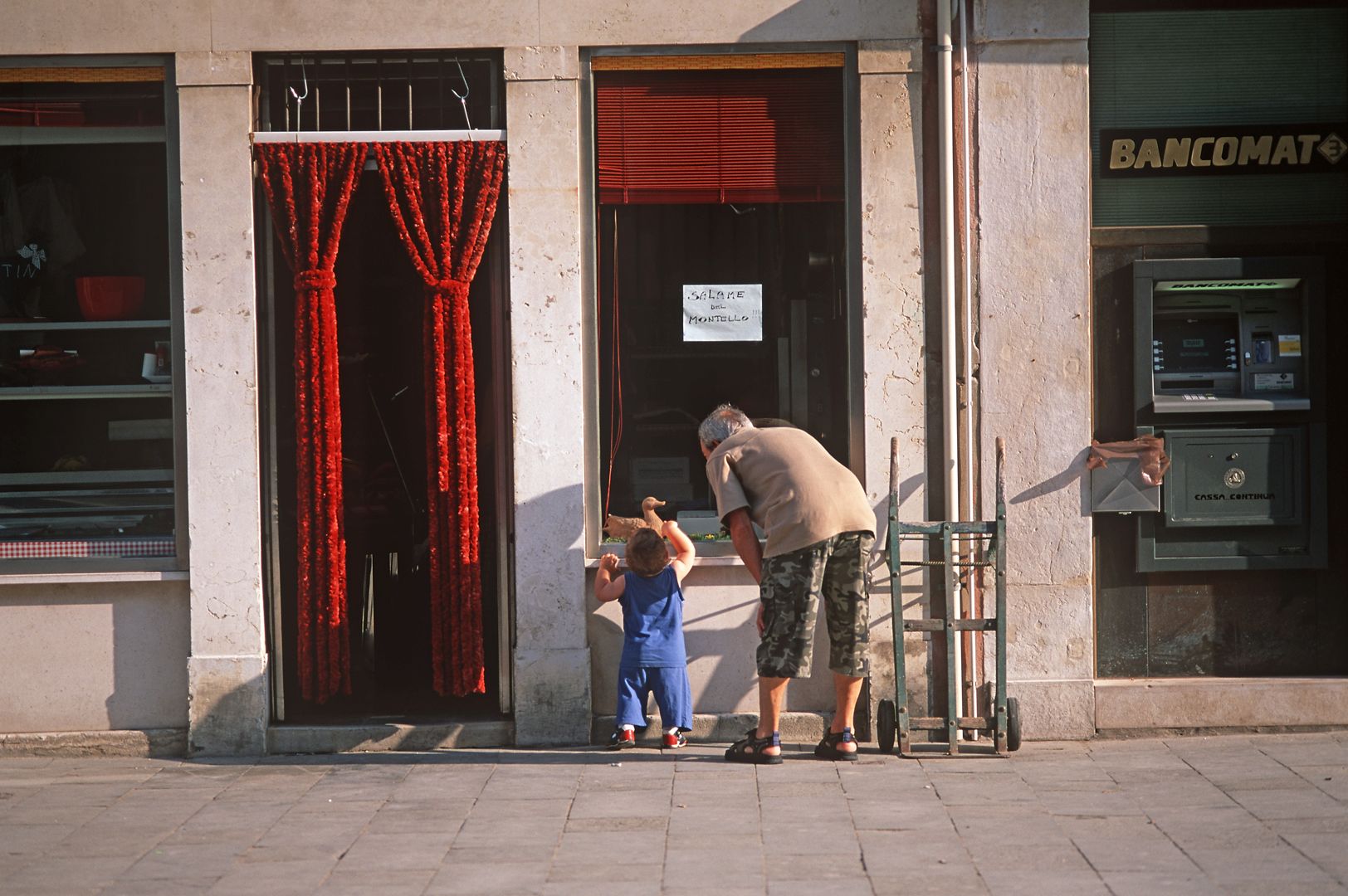
This next is also from Venice, and is of course a shop in a Venetian context. Not a candid street snap, as it was taken on a large format camera on a tripod.
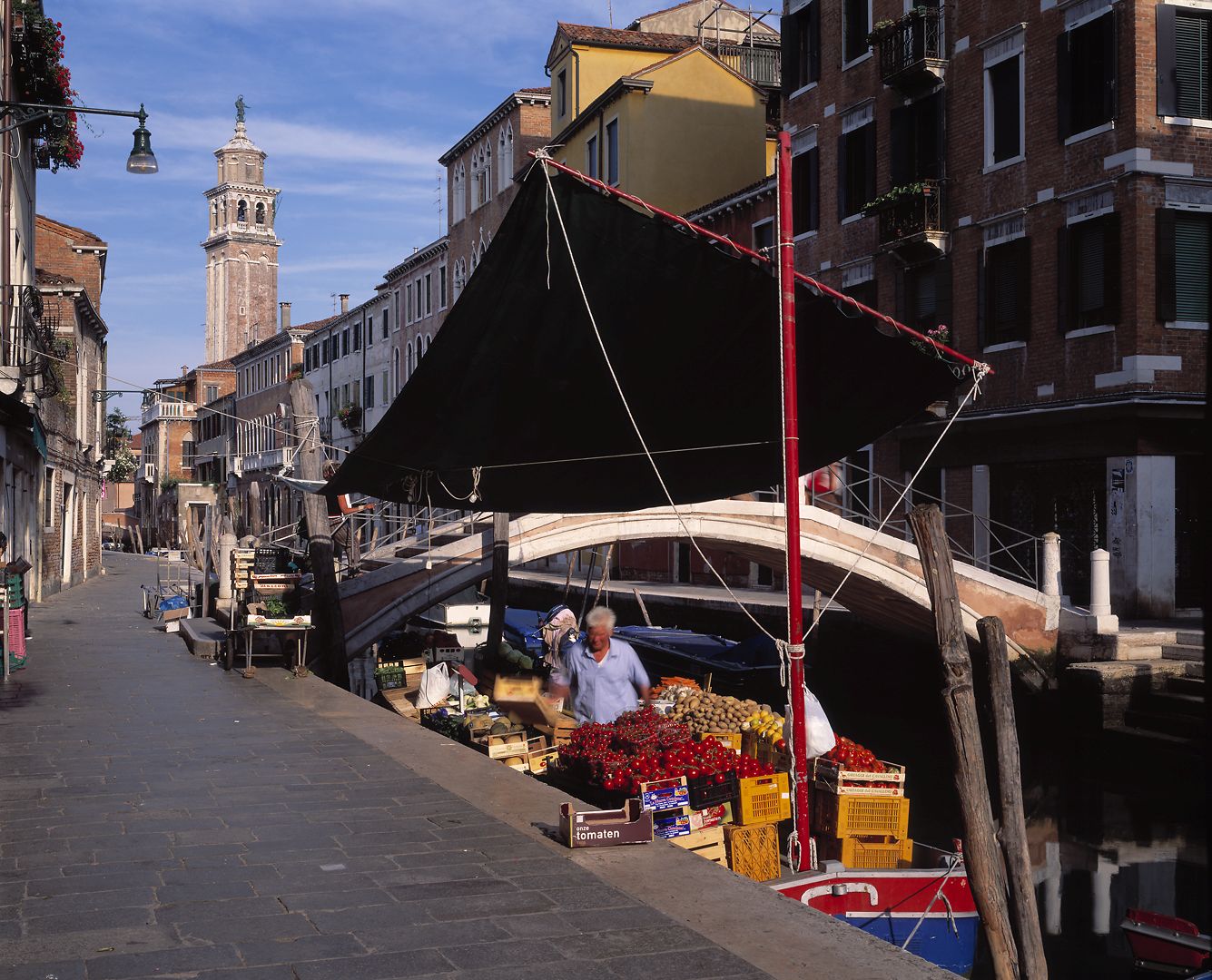
The island of Burano, in the Venetian lagoon, is famous for its brightly coloured buildings. Here is a butcher’s shop.

The town of Sulmona is in the rugged region of Abruzzo, surrounded by high mountains. It is famous in Italy for the production of confetti for weddings and other celebrations. Now in Italy confetti are not bits of coloured paper to throw at the happy couple. They were originally hard sugared almonds – not the sort of thing you would throw at anyone. These days “confetti” include all sorts of hard candies, many garishly coloured. The maker pictured below specialises in making sunflowers out of them.
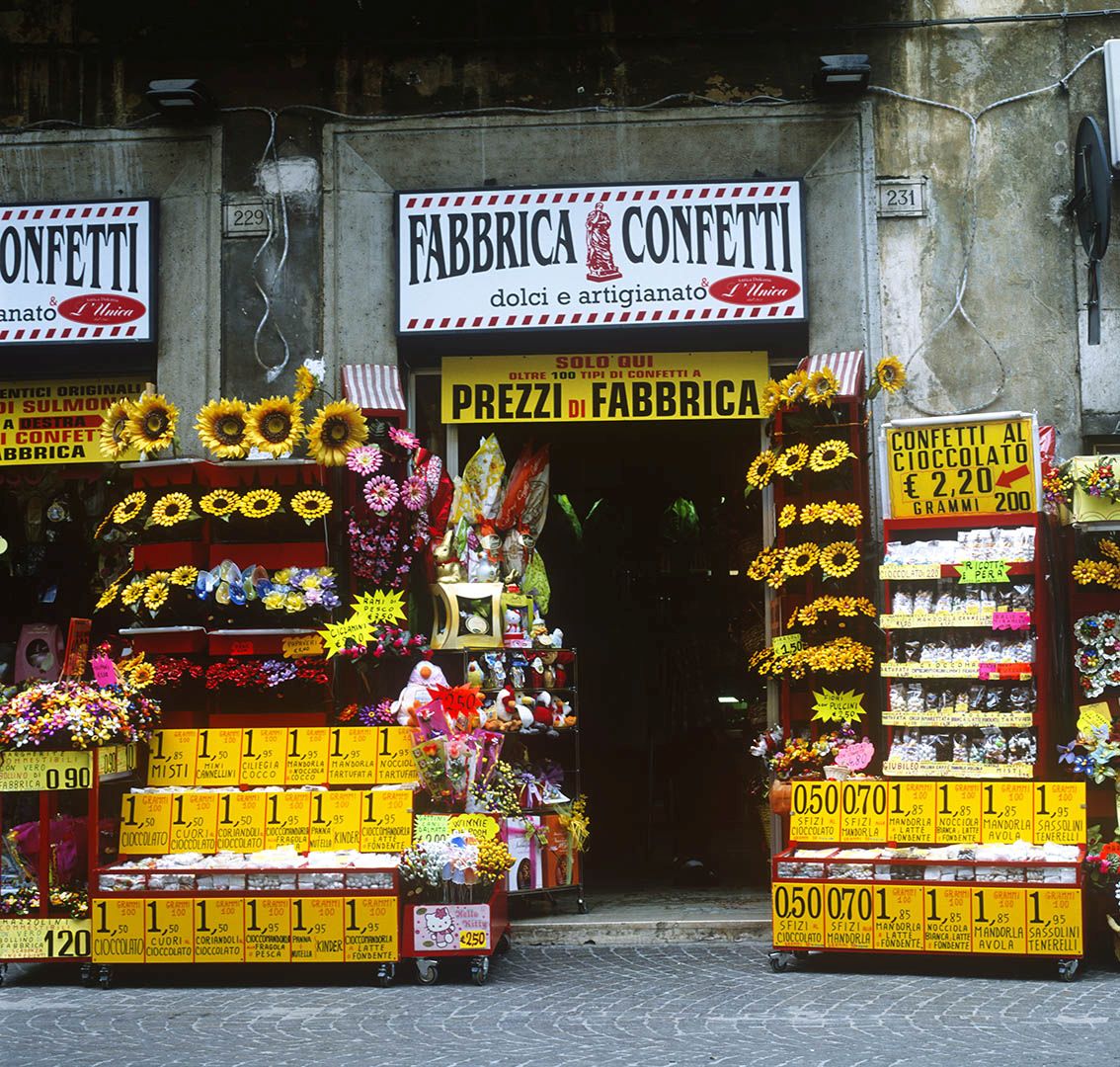
In Naples, the colour and glow of shops, especially a baker like this, make a particular contrast to the gritty streets outside.
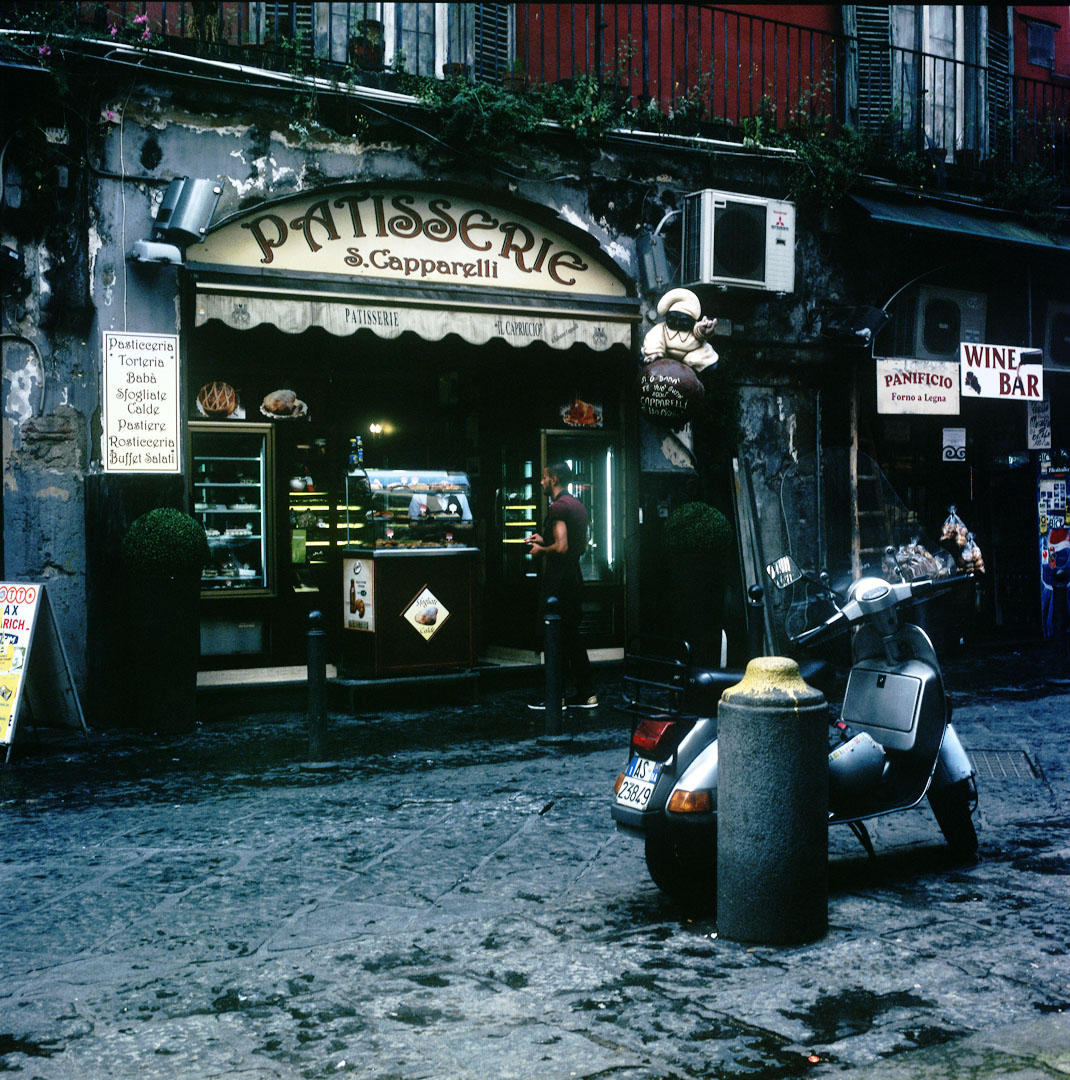
The picture below is from Bologna, which is generally thought of of a gastronomic centre. Needless to say, it has several excellent (and expensive) food shops, which clearly feel obliged to have window displays that match the reputation.
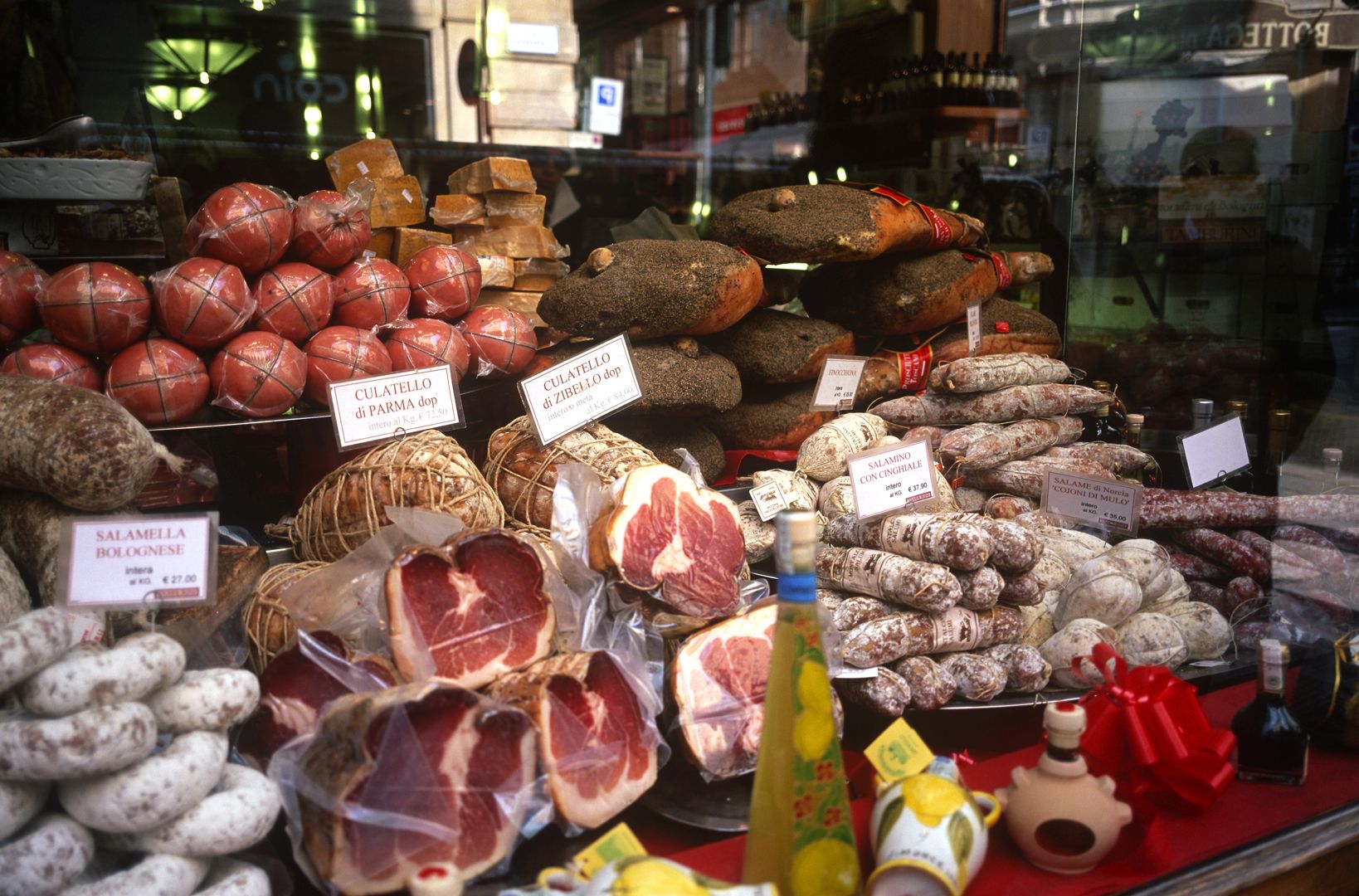
Here are four very elegant shop fronts. A cafe and tobacconist in Urbino, another confetti outlet in Sulmona, a butcher’s in Spoleto, and an electrical parts shop in Bologna.
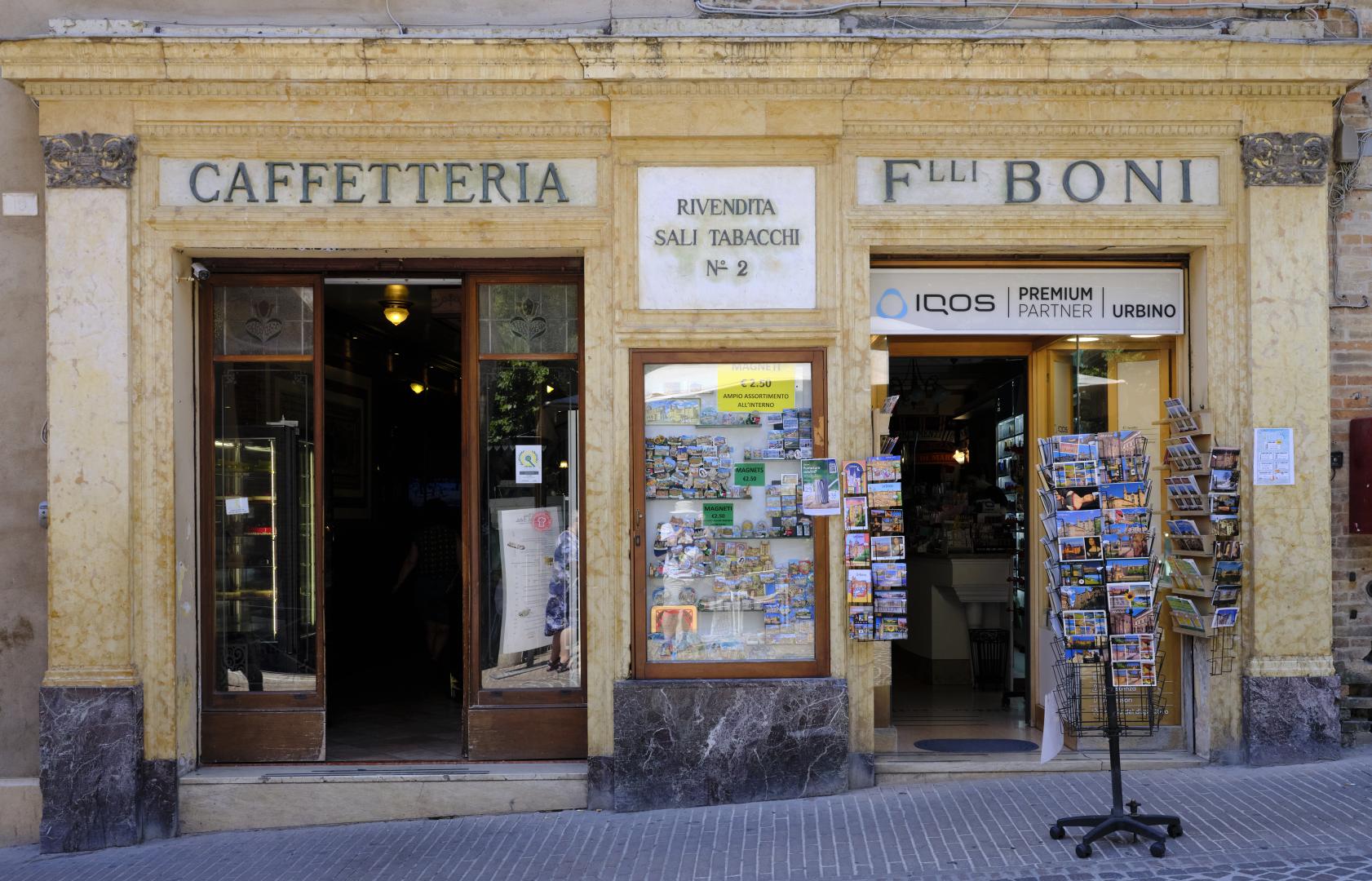
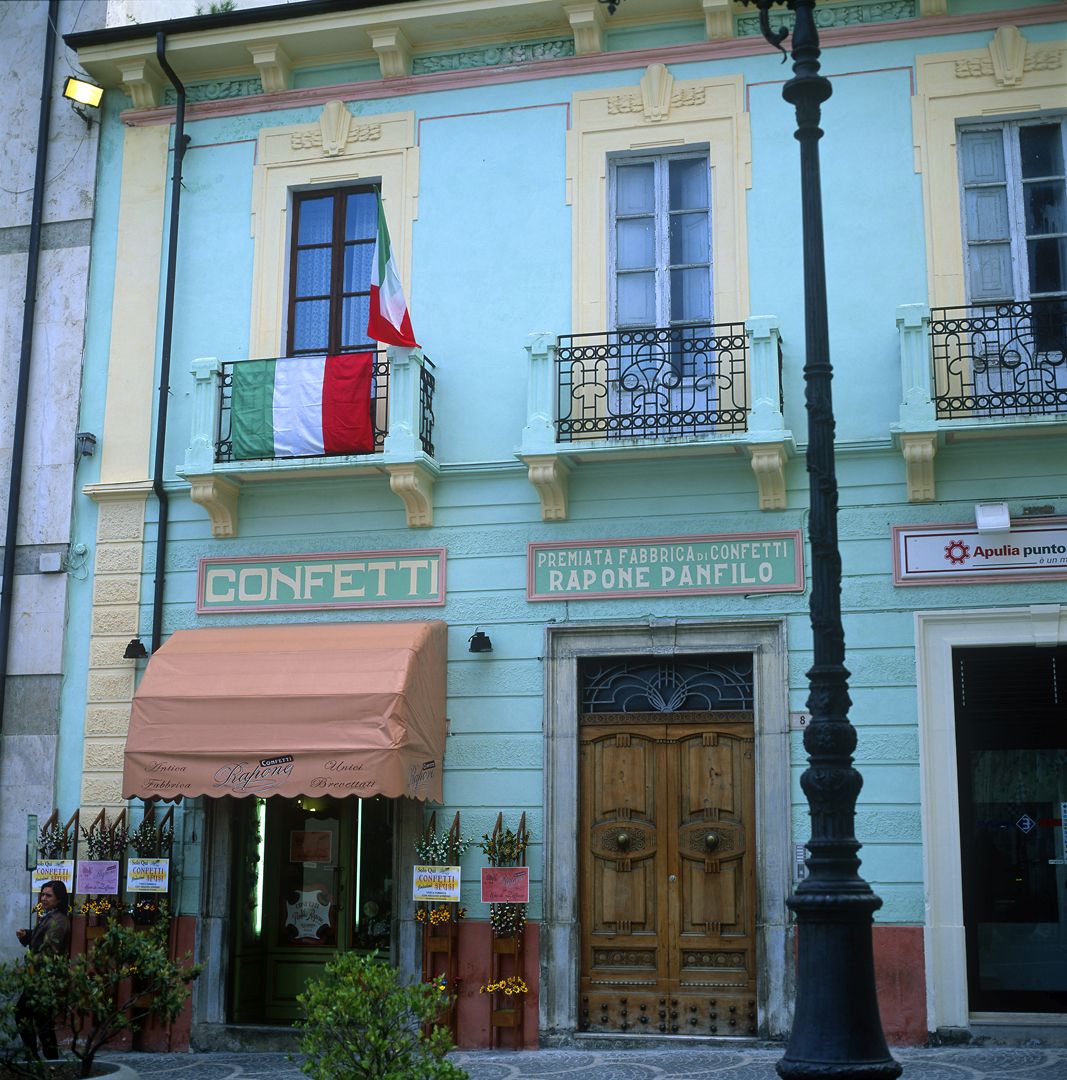


Here are two very traditional shops. Another salumeria, from Verona, and “Everything for the Home” from San Quirico d’Orcia in Tuscany.
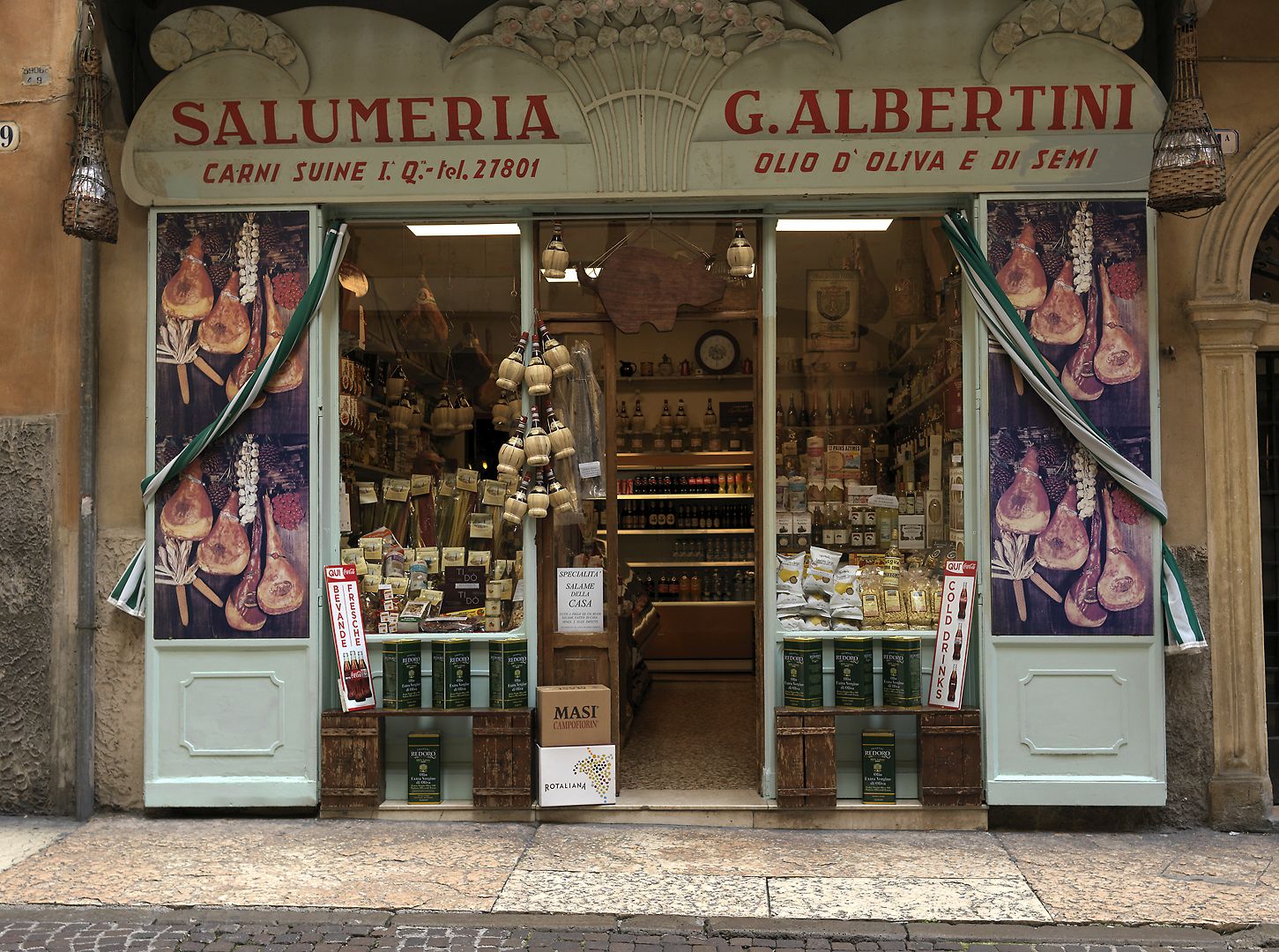
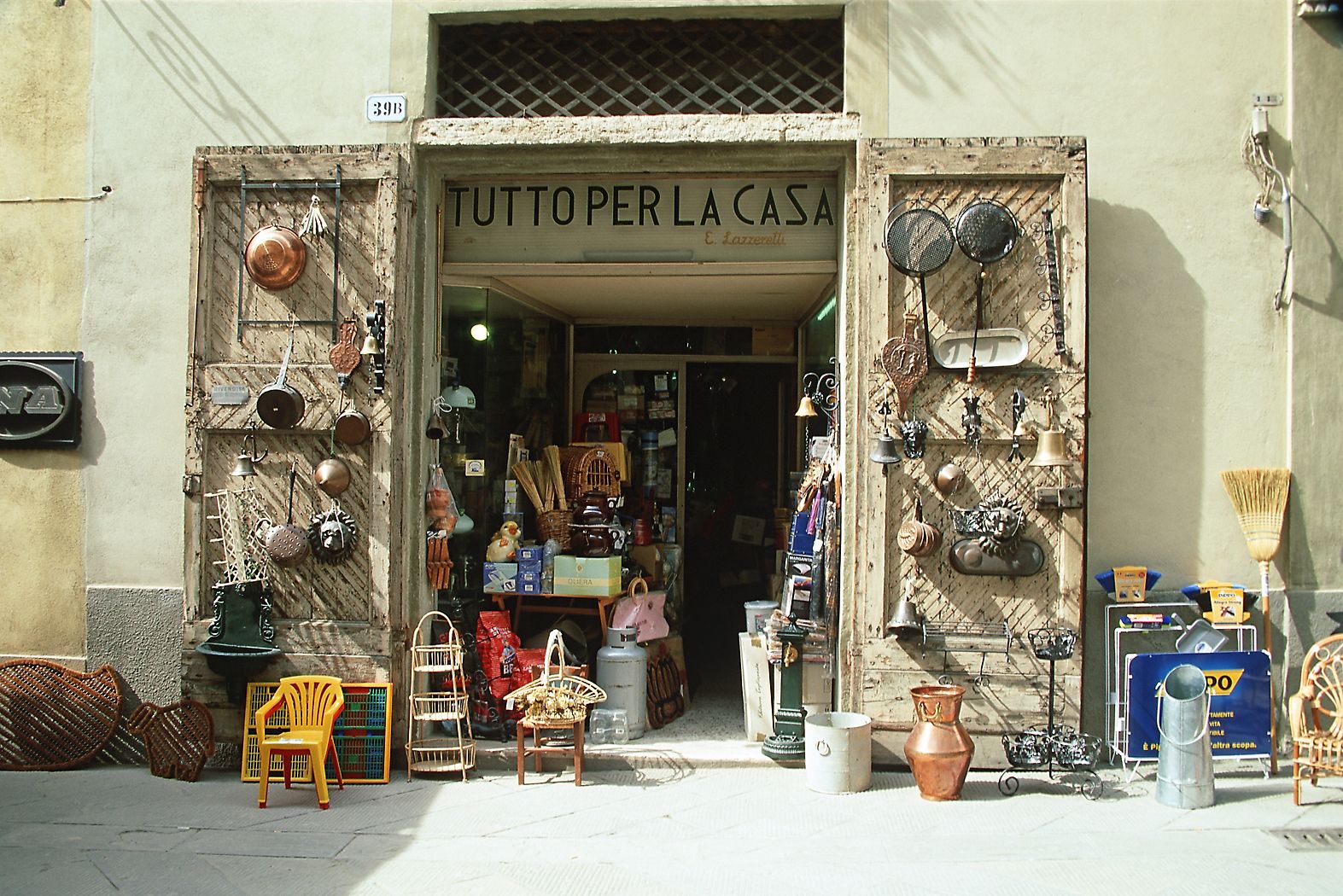
And I will finish with two of my favourites. The first is from the town of San Zeno in Montagna, high up above Lake Garda. The second is the town of Castiglione del Lago, a fortified town sticking out into Lake Trasimeno in Umbria. They are my favourites because they include the proprietors. Bless them, and all the shopkeepers of Italy.
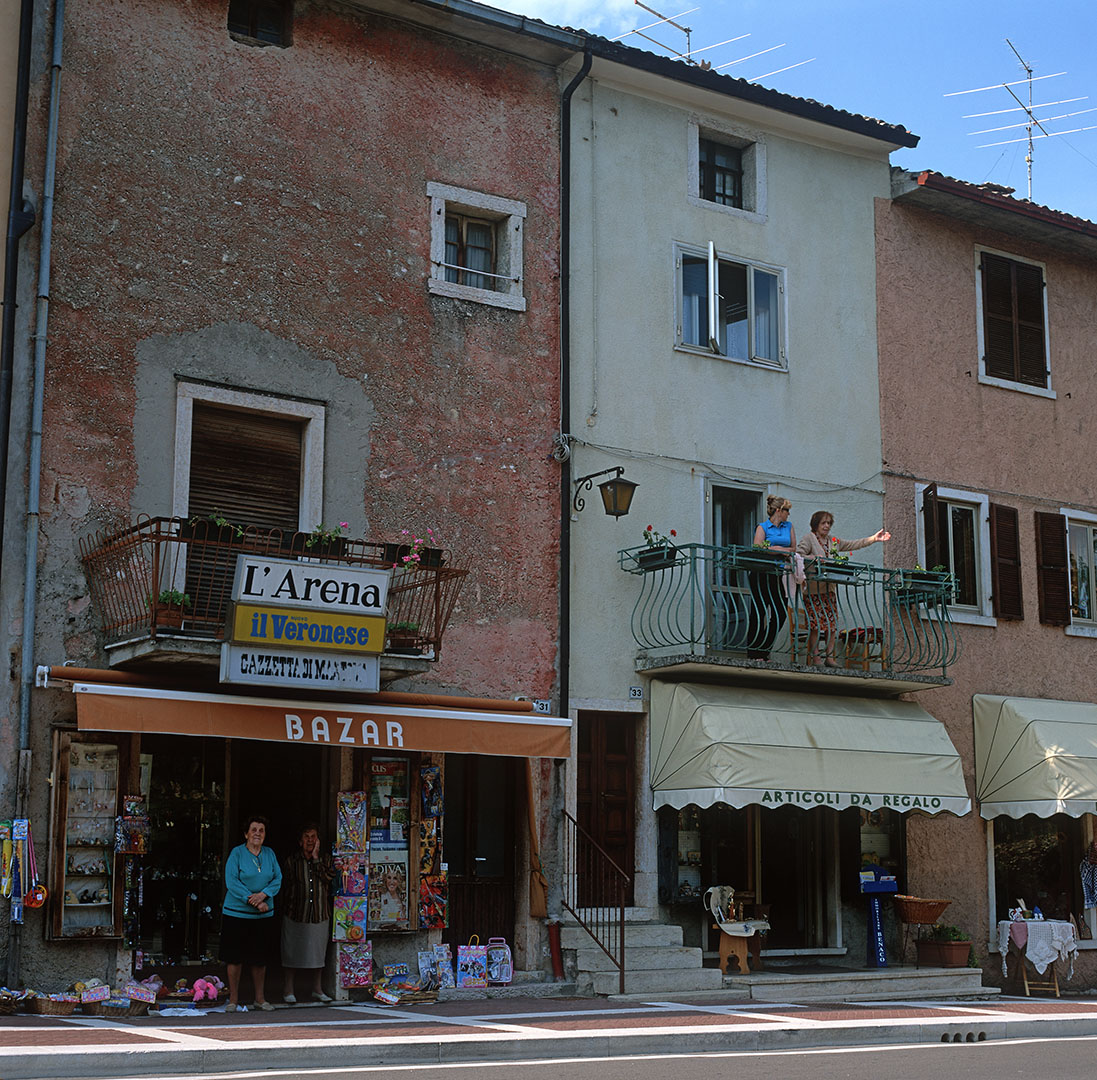
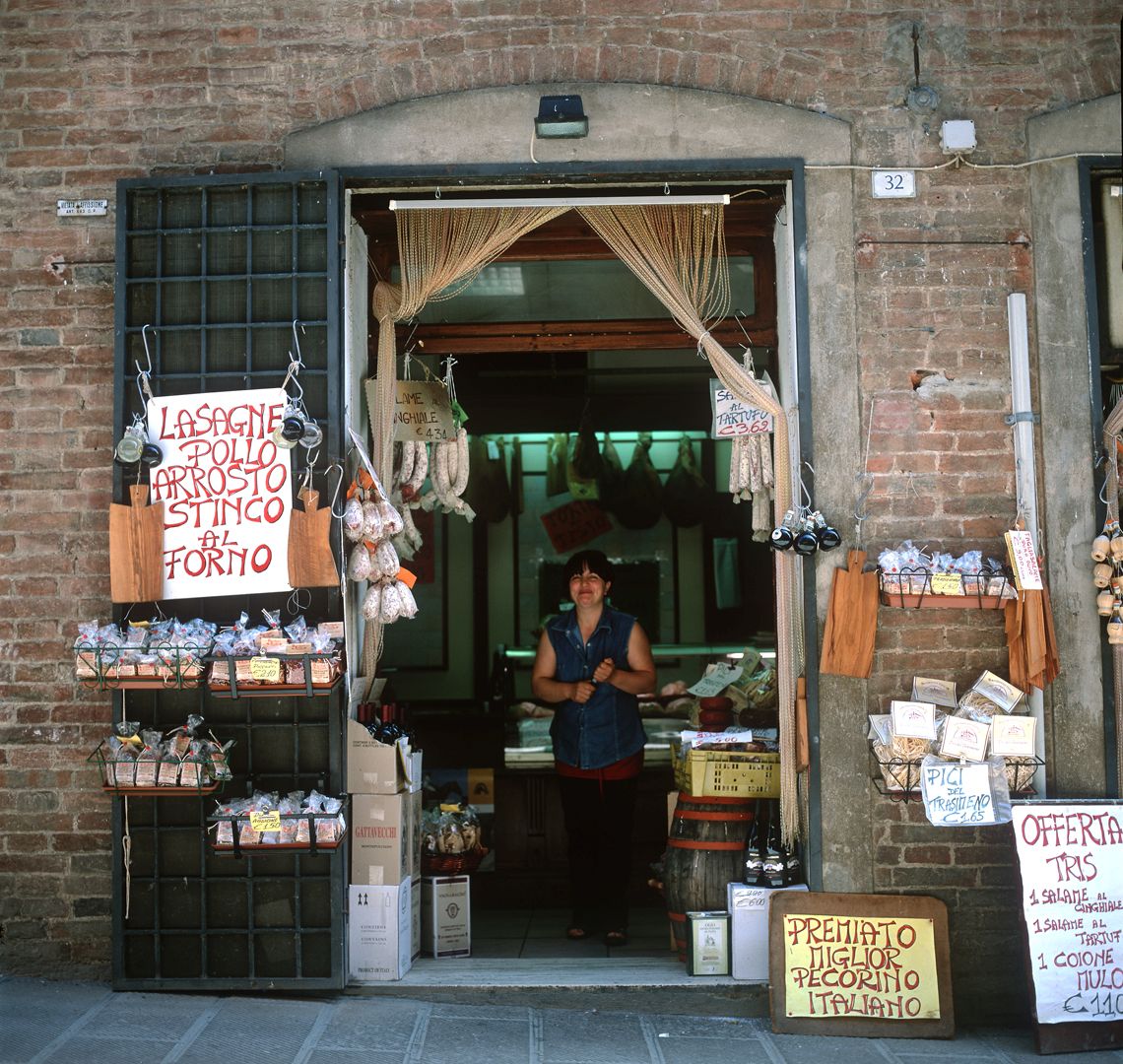
Note, added 2024: I said earlier that I wished I could find a digital equivalent of the Contax G1 35mm camera. A year ago I bought a Fujifilm X-Pro 3 and I must say that does give me much of the same kind of feeling when using it.

One Reply to “A Nation of Shopkeepers”